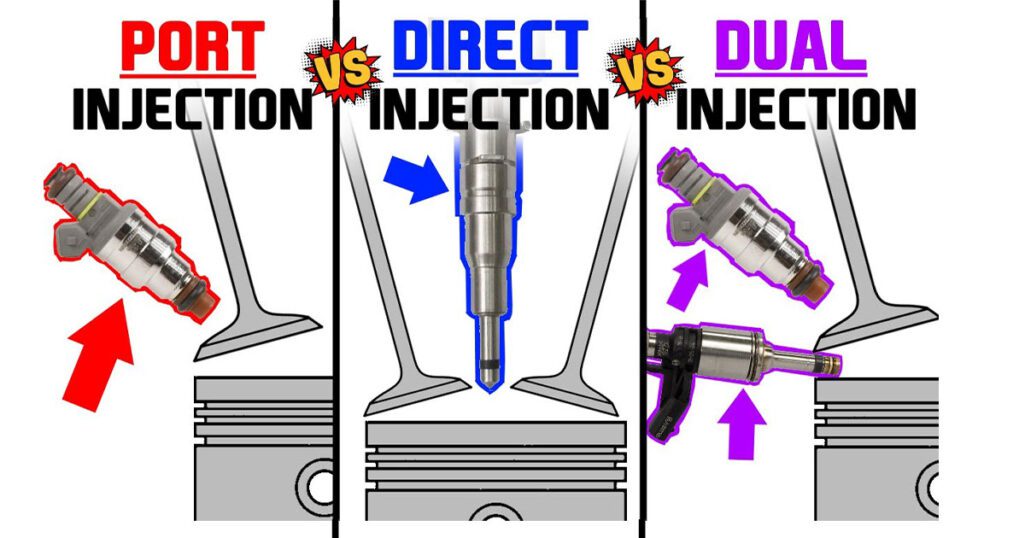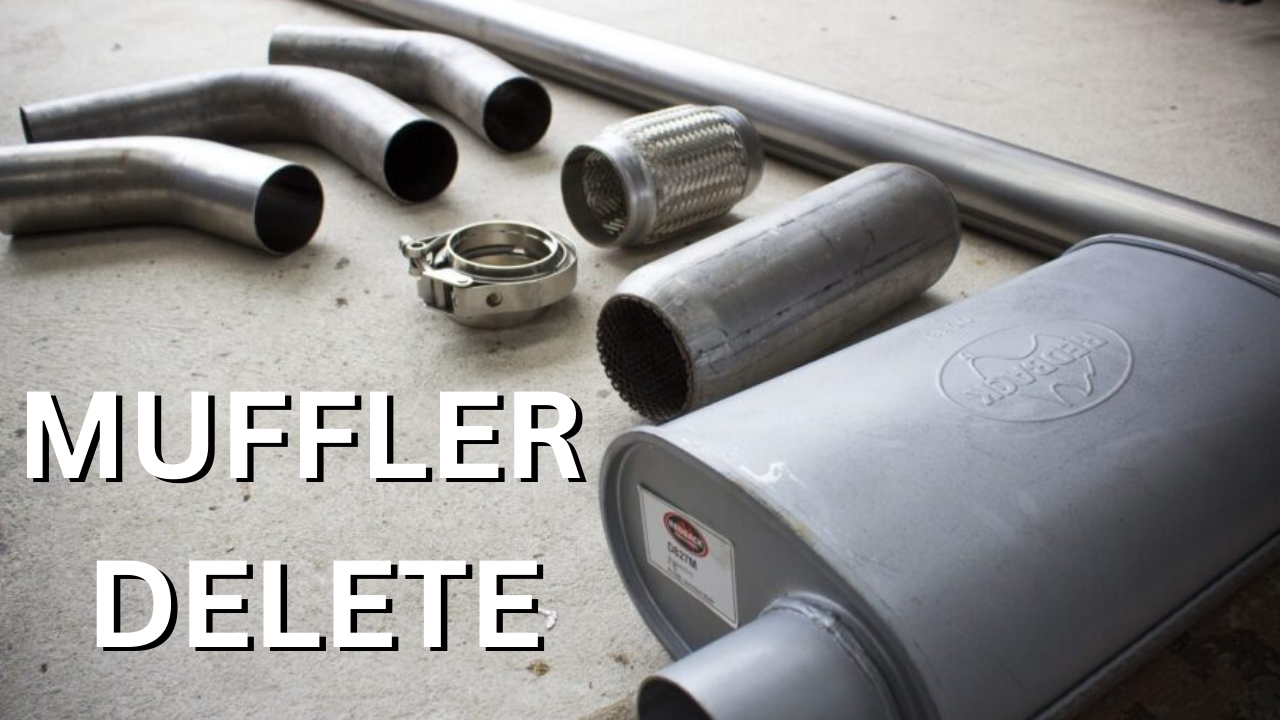
The intriguing process of welding can be traced back to 1904 when the coated electrode was first created. To put it in an easier way, welding is the process of joining different bits of metal by first melting them and then fusing them.
A welding power source is required for the process of welding since it is necessary to generate an electric arc in order to melt the parent material that is being welded as well as any consumable that is being used. As a result of this, previously distinct metals are now bonded together. There is a wide variety of techniques for welding; however, the following is an overview of the four types of techniques that are utilized the most frequently.
Gas Metal Arc Welding – MIG (GMAW)
This technique, also known as Metal Inert Gas or MIG welding, employs a tiny wire as the electrode. As the wire is fed through the welding equipment and towards the welding location, it becomes heated. This approach requires a power supply with consistent voltage and direct current. Shielding gas must be utilized to shield the weld from airborne pollutants.
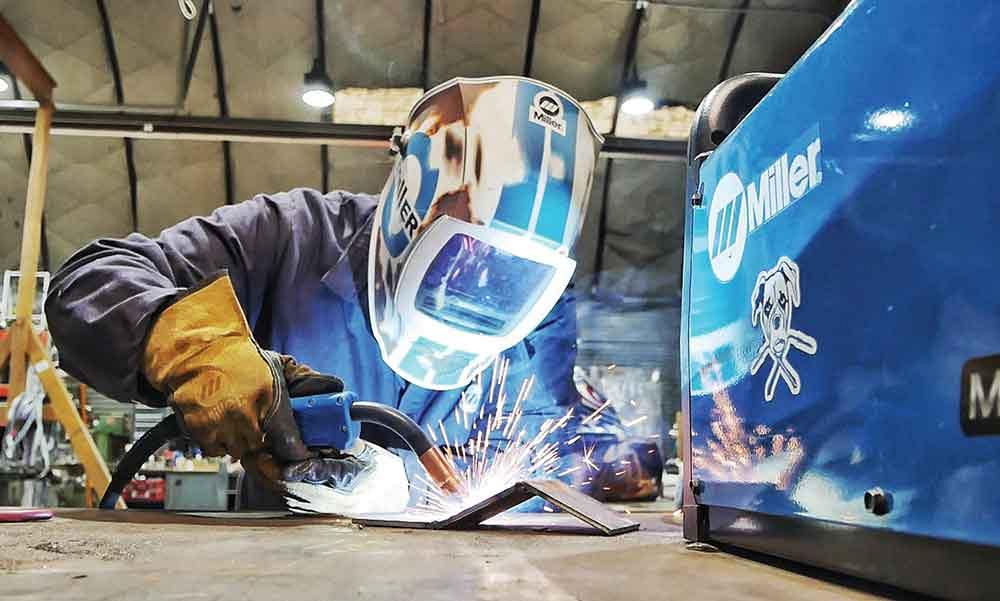
Usually, carbon dioxide, argon, or their combination is used. This technique is frequently applied to a variety of metals, including stainless steel, copper, nickel, carbon steel, and aluminum.
Uses
This welding technique is the most used in the construction and automobile industries. MIG welding is most frequently used to repair automobiles, motorcycles, RVs, vans, and SUVs. MIG welding is the ideal technology for assembling or repairing the body or interior of any car since it can produce a strong weld for even the thinnest metals. Including plate and large bore pipe, and is the most prevalent industrial welding method.
Pros
- Gas metal arc welding is one of the simpler procedures to master, making it perfect for beginners.
- It enables rapid welding speeds, minimum cleanup, and better control over thinner materials.
- MIG welding provides clean, attractive welds.
Cons
- Some disadvantages of this welding technique include the expense of shielding gas and the inability to weld heavier metals or execute vertical or overhead welding.
- These welding kinds are prone to external elements such as rain, wind, and dust, making them unsuitable for outdoor use.
- MIG welding quality issues include dross and porosity, which weaken the structure.
Gas Tungsten Arc Welding – TIG (GTAW)
TIG welding, unlike other forms of welding, employs a tungsten electrode to produce the weld. A gas tank is required for TIG welding to provide the steady flow of shielding gas, often argon or a mixture of argon and helium. This indicates that it is typically better accomplished indoors and out of the environment. Due to the small distance between the arc and the area to be welded, this process requires great precision and ability. This approach produces welds that are renowned for their extraordinary strength.
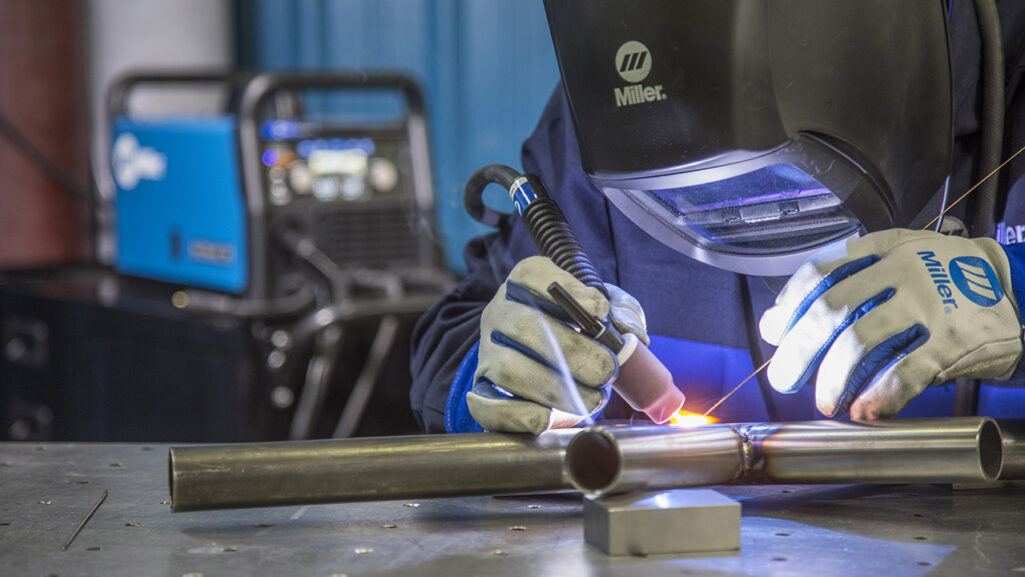
Image Source: millerwelds.com
It is one of the few methods of welding that can be performed utilizing only the two metals being welded. If you like, you may add filler metal, but it must be fed manually. The heat and arc produced by the torch are used for welding the majority of conventional metals, such as aluminum, steel, nickel alloys, copper alloys, cobalt, and titanium.
Uses
Steel, stainless steel, chromoly, aluminum, nickel alloys, magnesium, copper, brass, bronze, and even gold can be welded with TIG welders. TIG is a suitable welding technique for bike frames, lawnmowers, door handles, and bumpers, among other items.
Pros
- Due to the small distance between the arc and the region being welded, the highest quality welds are produced.
- TIG welding is a precise process that produces visually beautiful welds and does not necessitate cleanup due to the absence of spatter.
Cons
- Mastering it requires an immense amount of precision and ability.
- A gas tank is required for TIG welding to provide the consistent gas flow required to protect the weld making it costlier.
- This indicates that it is typically better accomplished indoors and out of the weather.
Shielded-Metal Arc Welding – Stick (SMAW)
These welding methods have been in use for decades or even centuries, with only minor adjustments made from time to time. A stick welder is equipped with a power source, and large cable leads with an electrode holder on one lead and a workpiece clamp on the other. The electrode is a metal rod, similar to a thick section of wire. They are available in many metals and alloys.

There is variation in the diameter of the welding rods. It is chosen based on the thickness of the metal. Welding rods are coated with a thick layer of flux, a substance that burns in the arc to produce a shielding gas for the weld pool. As the metal cools, the flux produces a thin, brittle crust known as slag, which must be removed by chipping or brushing.
Uses
Stick arc welding is suggested when it is difficult to reach the weld or when rust, oil, or other impurities are present at the weld joint. It works effectively on farm equipment made of steel, cast iron, aluminum, stainless steel, and hard surfaces.
Pros
- Because shielded metal arc welding requires minimum equipment, it’s cheap.
- This type of welding doesn’t need shielding gas and may be done in wind or rain.
- It’s perfect for repairing rusted, painted, and unclean equipment.
- Quickly swappable electrodes make different welding metals simple.
Cons
- Stick welds do not yield the highest quality goods.
- They are susceptible to porosity, cracking, and superficial penetration.
- In general, stick welds are less durable than those produced by other forms of welding.
- It is not recommended for thin metals.
Flux-Cored Arc Welding (FCAW)
This method of welding is quite similar to the MIG welding technique. Many MIG welders are also capable of performing the functions of FCAW welders. A wire that acts as an electrode and filler metal is fed through your wand in the same manner as in MIG welding. Here is when things start to diverge from one another.
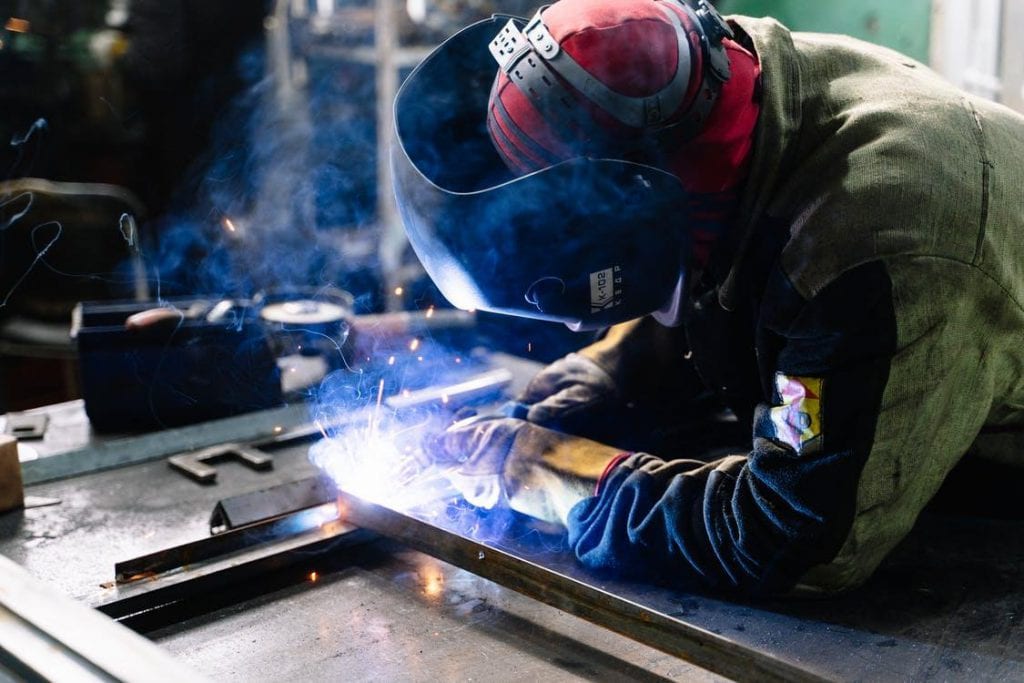
When performing FCAW, the wire has a flux core, forming a gas shield around the weld. Because of this, there is no longer a requirement for an external gas supply. However, there are two distinct varieties of FCAW: the first uses shielding gas, and the second depends on the self-shielding agents generated when fluxing agents break down inside the wire itself.
Uses
FCAW is suitable for thicker, heavier metals because of its high-temperature welding characteristics. Due to this, it is frequently used for heavy machinery repairs. It is an efficient procedure that generates little waste. Due to the volume of smoke and fumes produced during the welding process, Flux Cored Arc Welding should be performed outdoors or beneath industrial ventilation hoods.
Pros
- This welding technique is noted for being economical and straightforward to master.
- It is effective on dirt, paint, and corrosion and can be used in windy situations.
- The welding procedure is efficient and effective for welding heavy metals at high temperatures.
Cons
- It generates a lot of spatter, and the slag must be cleaned.
You can also watch the demonstration of four main types of welding in this YouTube video;
Some Other Welding Techniques
Plasma Arc Welding
Plasma arc welding is comparable to GTAW; however, the use of a smaller arc improves the weld’s precision. Additionally, it employs a distinct torch that achieves far greater temperatures. Plasma is formed by pressurizing gas within the cane. After the plasma is ionized, it becomes electrically conductive. This permits arc creation, which generates extremely high temperatures capable of melting base metals. This permits plasma arc welding without filler metal, another resemblance to TIG welding.
Normal gas mixtures consist of argon for plasma gas and argon plus 2 to 5% hydrogen for shielding gas. Helium can be utilized as plasma gas, but due to its higher temperature, the nozzle’s current rating is reduced. This technology is utilized by the aviation industry but is of no use to enthusiasts and do-it-yourselfers.
Atomic Hydrogen Welding
Atomic hydrogen welding, formerly known as arc-atom welding, is an exceptionally high-temperature technique of welding. It is an ideal material for tungsten welding. This form of welding involves shielding two tungsten electrodes with hydrogen gas. It can reach temperatures above those of an acetylene torch, and the molecules of hydrogen in explosive heat can generate temperatures of up to 3000 degrees Celsius.
Essential safety precautions include welder gloves, coveralls, goggles, and helmets. It is possible with or without filler metal. This is an earlier method of welding that has been substituted in recent years by MIG welding.
Electron Beam Welding
This is a form of welding in which a high-velocity electron beam generates heat through kinetic energy, therefore joining two materials. This is a very advanced form of welding that is often performed by machines in a vacuum. This sort of welding is utilized in various industries, including the automotive and aircraft engine industries.
This is a helpful device for aerospace components, bimetallic saw blades, and transmission systems. It is ideal for sealing electrical components. The method is applicable to dissimilar metals with different melting points and thermal conductivities. This welding technique is suitable for both thin and thick metals.
Which Welding Process Is The Strongest?
The material to which a weld is applied determines its strength. In addition, the weld length, size, and filler can also affect the strength of a weld. Each welding process, whether it be MIG, TIG, Stick, or Flux-cored arc, has distinct advantages and disadvantages over the others.
However, TIG welding is commonly regarded as the strongest type of weld due to its high heat output and delayed cooling rate, which results in great tensile strength and ductility.
Conclusion
Even though there are a lot of other ways to weld, the four techniques listed above are the most common ones. Certain processes are carried out by machines and can be done by an amateur at home and do not require a significant investment of money. In contrast, others call for specialized, high-priced tools and an expert.

